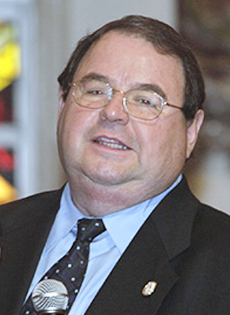
Faith, a mystery to celebrate
Monday, February 22, 2021
*Rogelio Zelada
A few years ago, I traveled to France to visit Lisieux, the Carmelite monastery that houses the life and relics of St. Therese of the Child Jesus. The relics had traveled to our archdiocese, but the excessive zeal of the "ministers of hospitality" of the parish prevented us from approaching the precious urn that houses the bones of the Little Flower.
We arrived so early at the Carmel of Lisieux that it was still closed. To save time, we headed to the great basilica erected in honor of the saint. It was a gift of Divine Providence; everything was prepared for the closing of an international congress on the spirituality of Therese, and since we arrived first, we were able to sit in a very good place.
There, in the middle of the central nave, was the magnificent golden urn with the sacred relics, protected by a transparent acrylic urn. I was able to touch it without restraint, with all possible devotion and deeply moved and grateful. But the best was yet to come. Bishops, priests, deacons, religious and people of God from all over the world formed a special liturgical assembly where everything was perfectly organized, synchronized and filled with a deep sense of splendidly celebrated communal faith. I felt like the elder Simeon: "Now, Master, you may let your servant go in peace." For a liturgy celebrated "as God commands" is an experience that makes us touch the realm of the sacred.
In that Eucharistic celebration, even the Collect was carried out in such a way that it was integrated into the rhythm of the assembly as part of its prayer. The use of song reflected the renewal and clarification given to us by the Second Vatican Council and subsequent documents on the role of song and music in the Church's celebrations.
For the conciliar decrees, music has a munus ministeriale, that is, a vocation of service. The liturgy is not at the service of music (nor of musicians), but the other way around. Singing is thus integrated into the prayer of the Church not independently, but as a humble servant of Catholic worship, to highlight texts of ancient origin that are solidly embedded in the Catholic tradition. All things were in place and the result was a joyfully solemn prayer.
That evening I made a great discovery, something I had read and heard many times, but had finally understood and delved into in that Eucharist in the Basilica of St. Therese of Lisieux: the key to the beauty of the liturgy is precisely in the community; for there to be a good liturgy there must first of all be a community that celebrates its faith in communion.The existence of a celebrating community, in the full extent of its meaning, makes real what the rites, gestures, words and movements propose. There can be worship, a sense of festivity, compliance with norms, etc., but if there is no group of believers who are capable of going out of themselves to welcome the rest of the participants in the dimension of sharing the same mystery of faith, the liturgy becomes poor, opaque and inconsequential. The greater the sense of community, the greater the liturgical depth and expressiveness. It is not so much a matter of improving the choir, the acolytes, the lectors, the extraordinary ministers of Holy Communion, all of which are extremely important; if community bonds are not strengthened, if the parishioners only have in common the convenience of the schedule of celebrations, the liturgy will lose the spark that ignites the joy of faith. It is not a matter of aesthetic criteria, but of deepening the feeling and sense of being a believing community, a family, a people of God.
The celebration of all the sacraments is intended to be done within the framework of a believing community, sharing together and united in the deepest meaning of what is being celebrated at that moment; a community which does not "attend" but participates by understanding and comprehending the old sense of the rites, incorporating their meaning, vibrating with the presence of the Risen Lord with whom it has gathered to enjoy his company and his encouragement. This is what the Church and the practice of faith in community are called to.

